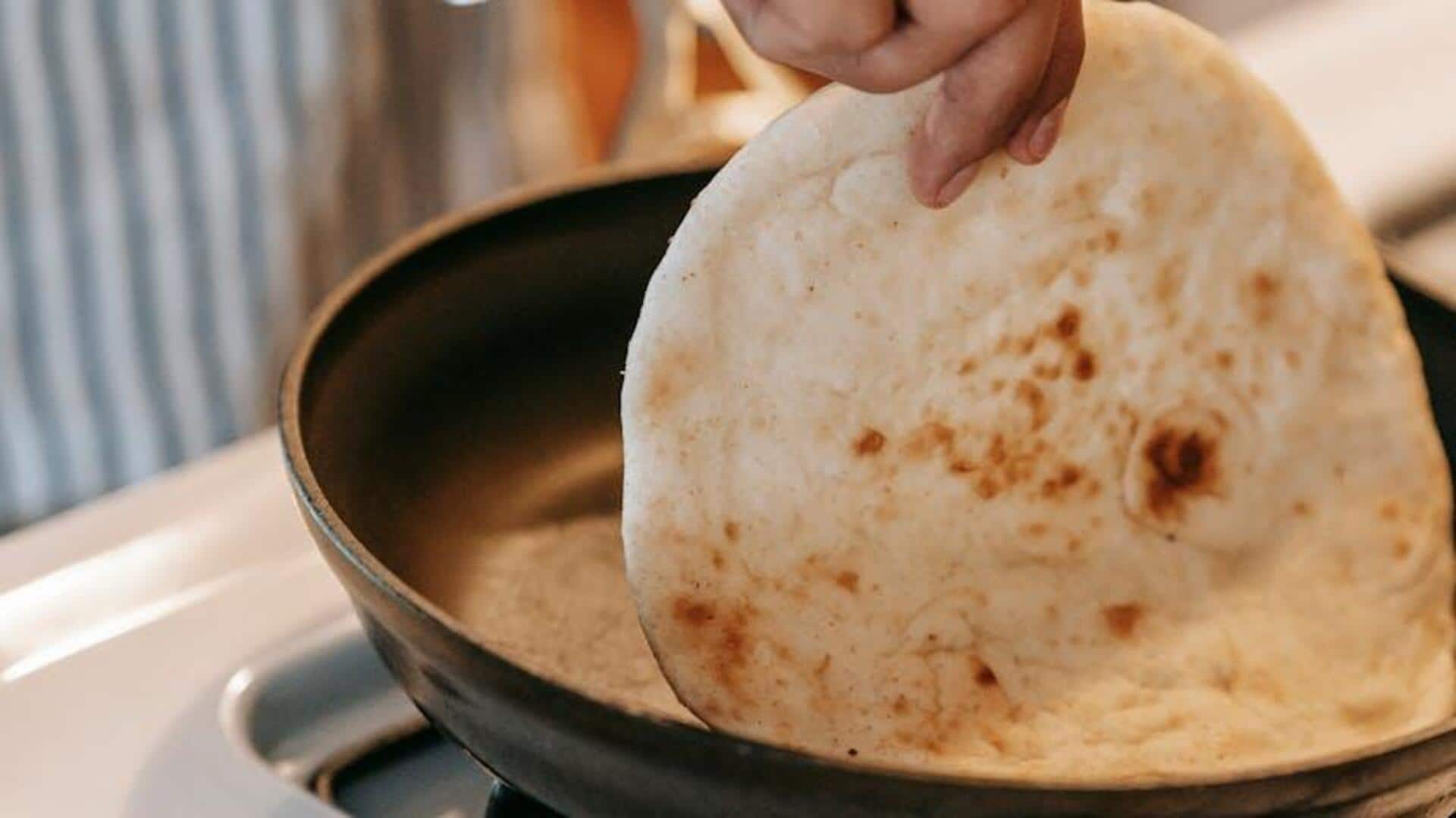
Tracing chapati's journey: Origin, history, and popularity
What's the story
Chapati, the quintessential Indian staple, has a glorious history that dates back centuries. The unleavened flatbread, made with whole wheat flour and water, forms an integral part of our daily meals across the nation. Its simplicity and versatility have helped it withstand the test of time, catering to different regional palates. From humble rural kitchens to modern-day dining tables, chapati remains a beloved element of our culinary heritage.
#1
Ancient origins of chapati
The history of chapati goes back centuries. It is believed the flatbread was first made by early farming communities that grew wheat. The simplicity of its ingredients—whole wheat flour and water—made it affordable for several households. Gradually, chapati became a staple food item, thanks to its ease of making and nutritional value.
#2
Regional variations across India
Chapati has transformed itself into many avatars across different parts of India. In the north, it's commonly eaten with vegetables or lentils, while in the west, it could be served with spicy curries. Every region adds its own twist with local spices or cooking methods. However, the basic soul of chapati remains intact- a simple yet satiating bread that goes well with everything.
#3
Nutritional value and health benefits
Not only are chapatis easy to make, but they also provide a ton of health benefits. Being made from whole wheat flour, they are packed with fiber which promotes digestion and keeps blood sugar levels in check. Chapatis also provide a healthy dose of nutrients like iron and magnesium without any additional fats or sugars. Hence, they are perfect for those looking for a balanced diet.
#4
Modern-day adaptations
In modern times, chapatis have been adapted to suit contemporary diets. These include gluten-free alternatives using other flours such as millet or sorghum flour for those on special diets. They continue to have a traditional charm among populations worldwide. Mostly because they remain just as versatile even now. They can be eaten with both traditional Indian dishes and international cuisines alike. Making them globally adored, beyond just within India's borders anymore.